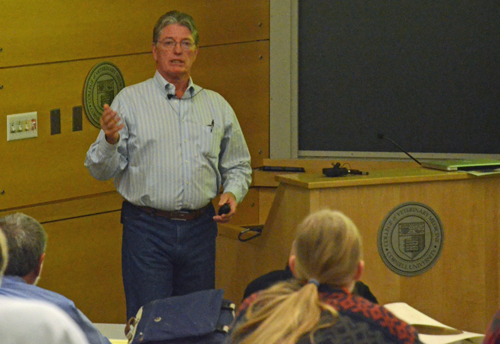This past weekend, I attended the Cornell Farrier Conference. Steve Kraus and the team at Cornell deserve much praise for putting together a great agenda. Nearly 75 farriers returned home from the university with great hoof-care information from the leading farriers and veterinarians. (You can read highlights from the conference here).
Dave Farley delivered business advice in one of the lectures. The Coshocton/Wellington, Fla., farrier runs a multifarrier practice with his son Jay. They also have dozens of farriers spend a day or more every year observing their work and receiving keen insight on how to manage sport horses.
Farley has one of the great business minds in the footcare industry. His lectures, whether on running a practice or managing sport horse feet, stresses the farrier as a professional. He wants owners to recognize farriers as such. To achieve this, farriers have to take on the responsibility of ownership.
The president of the American/Canadian Associations of Professional Farriers says he sees too many farriers missing the opportunity to be that footcare professional for their clients. The most opportune time to set that tone is as the relationship begins. When you engage clients, they can become active in managing the footcare of their horses.
"Talk to the clients, they have the answers," Farley says. "This is your chance to educate them. You also can learn a lot by listening to their tiny comments.
"The client told a story when you were hired about their past experiences with other farriers. Being aware of this history allows you to better address what is important to the client."
 In the process of understanding what the client needs and requires of you, you should in turn present your expectations. His farrier-client relationships have worked because he is clear when presenting these to the client.
In the process of understanding what the client needs and requires of you, you should in turn present your expectations. His farrier-client relationships have worked because he is clear when presenting these to the client.
"I present how I will do the best job possible, such as talking with the barn manager a week ahead from when I'll be there," he says. "Then I have the opportunity to discuss what I require in terms of having the horses in the barn and the number of crossties we need."
Farley also provides new clients with a sheet detailing what they should expect of him, and what he expects of them. Combined with that early detective work, Farley says there are fewer misunderstandings in the farrier-client relationship. There would be less concerns about the perception of farrier professionalism if more practitioners followed Farley's advice.







